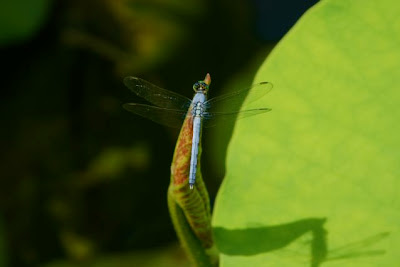Today, while searching for illustrative examples to share by writers who are in possession of all their senses, not to mention all their wonder, I came upon this passage in Stanley Kunitz's The Wild Braid. Scale is not a sense, of course, nor is the passing of time. But they are elements of framing and reporting that writers must finally master. With the simplest possible language, Kunitz takes back in time. He isn't trying to be a poet here. He's saying, This is how it was; this is how I moved through things and saw.
During my adolescence, out in the open fields, I would sometimes pretend I was one of the insects. I became captivated by dragonflies and imagined I could see the world as they did. Everything had a different scale.
I reveled in the sensation of being so light and being able to go anywhere, unburdened by a body.
Discovering the body was part of the joy, the sense of infinite possibility of being out in the woods. I recognized that it had weight and had certain limitations—there was no denying that. Obviously one's sensitivity was less acute than that of any other living creature in the woods. At the same time, the body was the very instrument of exploration.
I would find a leaf or a stone in the underbrush and have the sensation that nobody else had seen quite the same thing. And if I came across an arrowhead, that was a real triumph.
Sometimes, especially when one gets older, one gets very clumsy in the handling of delicate objects. The hands, the fingers, are less nimble than they were. But then, there's the compensation that one knows a bit more. There's a quid pro quo.
In the woods, one loses the sense of time. It's quite a different experience from walking in the streets. The streets are human creations. In the woods what one finds are cosmic creations.
1 Comments on teaching scale and time (and Kunitz), last added: 7/11/2012
Display Comments
Add a Comment




Love Stanley K. And this. Thanks. My friend Anne - whom you shall meet, spent 6 hours in the woods the other day. She, too, revels in nature.